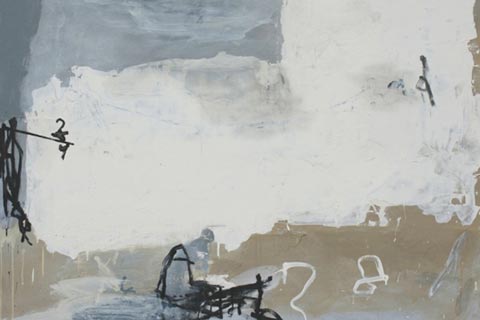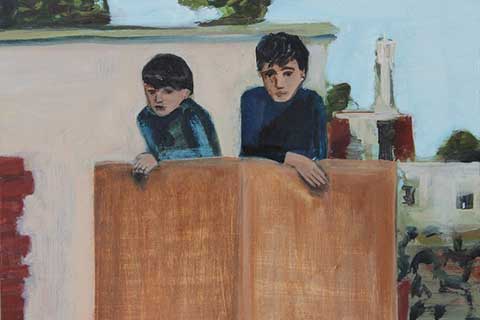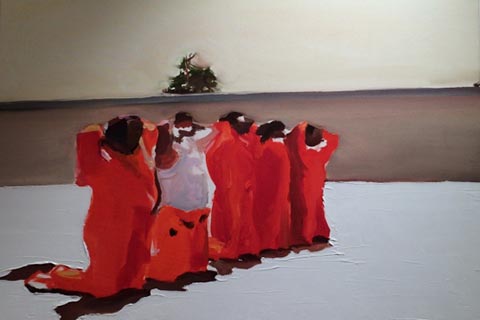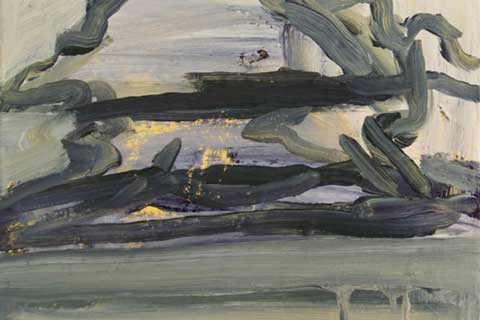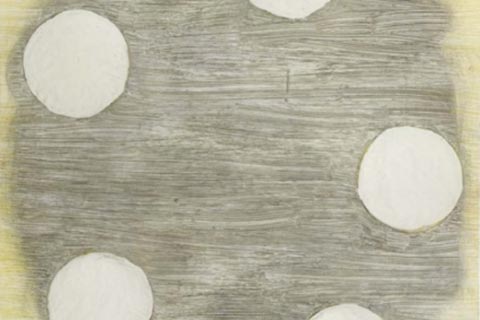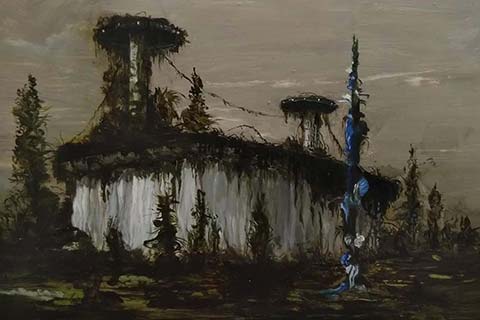Andrew Crane in conversation with Susan Gunn
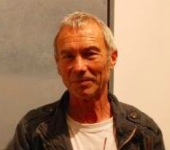
Susan Gunn: Can you give me a brief background to your life and how you became an artist please, Andrew?
Andrew Crane: My dad would sit me on his knee and say ‘What shall we draw?’ I would try and think of something really tricky, but was always amazed at the life-like result! This was the start of things.
My schooling was at Sevenoaks, in Kent. It was quite a posh school. We had to wear boaters and pick up other people’s litter in the town. My subjects in the sixth form were art and maths and more maths. The art department was looked upon by others as a place for misfits. I loved it. Our teacher (Bob White) was a practicing artist from the Slade School of Fine Art. I was impressed – not least because his beautiful wife ran the ceramic department.
The time came to make a decision for college. With maths and art, architecture seemed a likely choice, but 7 years training was just too much, so I chose a graphics course and got a place at the Central School of Art in London. These were good years. Much of the time was spent playing tennis in Lincoln’s Inn Fields, table football in the canteen, reading books on Buddhism, and consulting the I-Ching. I left, equipped to earn a living – at times quite a good living…but something was missing. Twenty years, and four children later, I took the plunge.
SG: From my research, I observe, and sense you are a man of relatively few words when it comes to speaking about your work…. Is this a conscious decision to provoke an unprejudiced response to your paintings?
AC: This is a good question. In fact, they are all good questions. I do find it difficult to talk about my work – perhaps because there is little rationale to it. I show up…get the background in…and then put in the foreground. With abstract work, you either ‘get it’ or not, and no amount of words will make a difference. Or at least, if words are required, then the piece is not doing its job. A title though, is forgivable…and often the only clue.
SG: How has your practice changed over time?
AC: Early work was mainly watercolour and figurative – often banal subjects. Having had no formal training in paint, these were learning years.
I started to use type and the written word in paintings.
One day, when working on an oil painting that was going nowhere, I spotted a bag of cement on the floor of the warehouse that was my studio. I mixed up the cement and plastered it over the oil painting. Surprisingly, the cement, when sealed, took paint well, and had the added tactile dimension.
Much of my work now is with cement.
I like using materials from the hardware store, rather than conventional paints.
I rarely know what is going to happen when I show up at the canvas. With the cement pieces – because I’m such a crap plasterer – the imperfections in the surface will often give a clue to what comes next.
SG: I find the term Abstract quite loaded and often misinterpreted….would you define your paintings as abstract and if so what is your definition of it?
AC: I prefer to think of my work as ‘not confined to memory’, so there’s no possibility of saying ‘ooh look, a cat!’. The language is vaguely familiar…ie, familiar enough to gain access, but not familiar enough to ‘solve’ the puzzle. I would hope that the viewer is left asking questions – firstly about the painting – and then, perhaps, about themselves. I’m reminded of a quote by Osho: ‘Not knowing is the most intimate’. The less certain I am, the more I’m open to possibility.
SG: Viewing your work, I have the impression that you have an affinity with the elements, the weather, the landscape, …. Is nature important in your work?
AC: Yes – the landscape is often evident, even in the most abstract pieces. I live in the beautiful countryside of Northumberland and it’s hard to ignore. But I can’t pretend not to admire those that manage very well without a horizon line.
SG: You often add fragments of text to your paintings…how important are the typographic and hand written elements to your work?
AC: I guess, if they are added, they are important. The calligraphy is invariably illegible or obliterated, yet leaves evidence of ‘the person’. In earlier pieces the words/numbers related to some specific ‘message’. More recently there is no preconception – no idea to impart – there is a continuous repartit as the image unfolds.
SG: If I may say, I find your paintings very tactile, they embody a rawness and an eloquence.….
AC: Thank you, Susan
SG: How would you describe your relationship with the materials you use?
AC: They are like friends.
SG: Do you give priority to the materials or the mark-making aspects in a piece?
AC: Both have equal status. The pieces are as much about silence as conversation.
SG: Artist influences I discern from looking at your work are aspects of Antoni Tapies, Robert Ryman and C Y Twombly….. do any of these or any other artists inspire your painting?
AC: Yes. Tapies and Twombly are definitely favourites. I have visited the Fundació Antoni Tàpies in Barcelona, 4 times now. Each time it feels like a pilgrimage. What I love about his work (and Twombly’s) is the spiritual nature – the struggle with personhood and the ‘world’. Of course with Tàpies, there is an empathy with the materials too…but i came to cement before i came to Tàpies. Prior to T and T came JMW Turner. He will always be the Master for me.
SG: Do you have a philosophy or outlook on life that is pivotal to your practice?
AC: ‘As long as I am a person I am asleep’. In some paintings there are brief moments when the person disappears. These are always the ‘better’ pieces. And strangely, they are the most accessible. Perhaps because in each of us there is a recognition that is beyond the rational mind.
SG: Do you have a habitual or erratic studio routine? What does a typical day entail?
AC: I’m pretty regular with my day. On waking I look out of the window, then make a cup of tea…swiftly followed by coffee. Then it’s up to the shed – a short walk up the slope (on John Martin’s Way). Breakfast usually happens mid-morning. I often have several pieces on the go at once, particularly if working on cement.
I still do the occasional graphic design job – books mainly, for my poet friend, James – and this takes priority because it brings certain income.
A studio day usually ends around 6pm. One of the best ways of going to sleep is to look at the day’s work in my head.
SG: Lucien Freud once said, “every painting is a self portrait”….. do you see yourself in your paintings?
AC: Yes, Lucien is right….which is pretty scary, haha!
SG: What was the last exhibition you saw that thrilled or inspired you?
AC: Peter Doig’s show at Tate Modern.
SG: How is your practice developing, do you have any pre-occupations that come and go or do you like to retain consistency in your paintings?
AC: I don’t really think about ‘development’….I tend to show up and see what happens. Using new materials is always a challenge.
SG: What are your future aspirations for your practice?
AC: I need to work big again. I have two 6ft square stretchers that need canvas. They’ve been hiding in the shed for too long.



